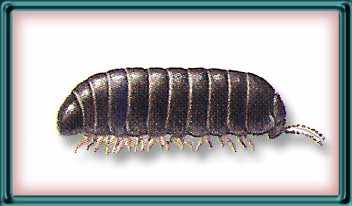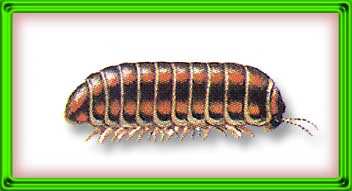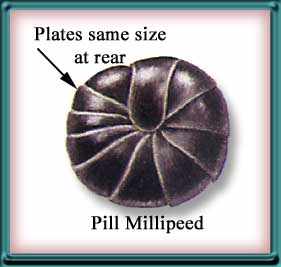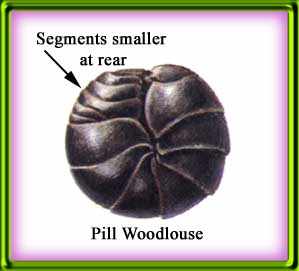
(The Pill Millipede)

(Another Pill Millipede)
Our common Pill Millipede, Glomeris marginata, looks much more like a woodlouse than a millipede at first sight, but it is easily distinguished from the woodlice by having 17-19 pairs of legs. Woodlice only have seven pairs. In addition, the dorsal plates of the pill millipede are much deeper and shinier black than those of the Pill woodlouse and there are no small plates at the hind end (see below).


As can be sen from the pictures, these last two features make it easy to distinguish the pill millipede and the pill woodlouse, even when the animals are rolled up. Glomeris marginata is up to 20mm long and 8mm wide and it has twelve apparent plates along the back. Whereas the iuliform millipedes are distinctly cylindrical, the pill millipedes are more or less semi-circular in cross-section. The sternite and side plates of each segment are quite small and they are not fused to the strongly arched tergite. It is this arrangement that allows the animal to roll up into such a tight ball. Pill millipedes live mainly in leaf litter and they play an important part in breaking the material down in some places. In the garden thay are most likely to be found in the hedge bottom or among the debris at the bottom of an old wall, especially where loose mortar has fallen andincreased the lime content of the soil. Like the pill woodlice, the pill millipede is rather more tolerant of dry conditions than it's relatives. Glomeris makes no nest for it's eggs, but each egg is enclosed in a little capsule of excrement.
Back to main Millipede page and treatment
Back to main Casual Intruders page